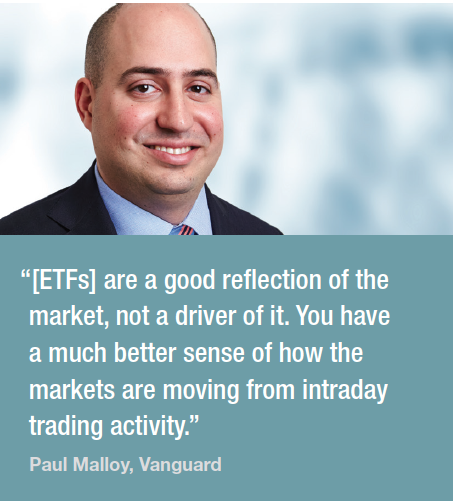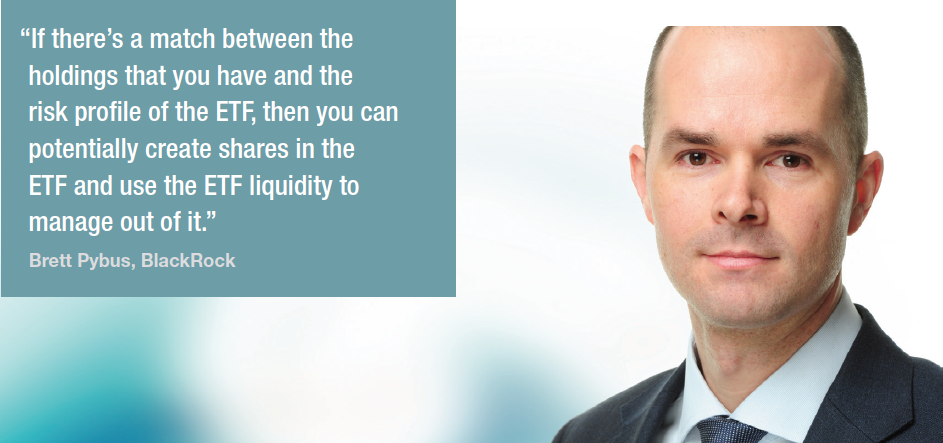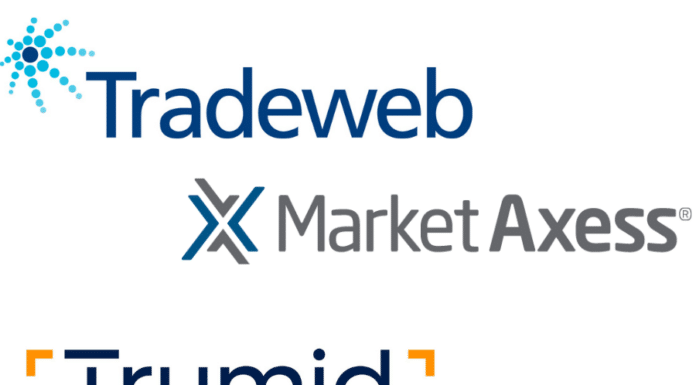Tougher capital and liquidity constraints for OTC assets are boosting exchange-traded products appeal to the buy side. Anna Reitman reports.
As trading over-the-counter (OTC) for fixed income instruments becomes more costly, some buy-side trading desks are looking to exchange-traded alternatives that provide greater liquidity and are not subject to the same capital costs for the sell side.
Research published last year by analyst house Greenwich Associates, showed that listed futures – treasury and euro-dollar combined – save between 40% and 70% versus trading OTC swaps. And though researchers noted that the swaps market will continue to be robust, since customisation is worth the fees for many market participants, it will also be on a smaller scale.
“Ultimately, cost pressures on traditional investment managers will lead them to the most cost-efficient methods of expressing views on interest rates,” said the report.
 A number of bank studies, including a recent report by CME Group, show healthy liquidity in treasury futures with open interest of nearly US$800 billion. Treasury futures trade nearly US$300 billion per day, with the bid-offer spread quoted at the minimum tick for more than 95% of regular trading hours and “significant” book depth, said Agha Mirza, global head of interest rate products at CME Group.
A number of bank studies, including a recent report by CME Group, show healthy liquidity in treasury futures with open interest of nearly US$800 billion. Treasury futures trade nearly US$300 billion per day, with the bid-offer spread quoted at the minimum tick for more than 95% of regular trading hours and “significant” book depth, said Agha Mirza, global head of interest rate products at CME Group.
“There has been a lot of increased focus on total cost of trading, leading participants to identify futures as the most capitally efficient instruments, [which] tend to have lower margin requirements due to standardisation,” he adds.
Futures are also demonstrating increased popularity over cash OTC instruments. The CME reports the ratio of treasury futures versus cash treasury volumes, a measure of treasury futures’ market share, has moved from 59% in late 2012 to 77% currently, representing an 18% increase in participation in just over three years.
That is hardly surprising given the increasing volatility in trading the underlying, and that a large amount of US treasuries are held by long-only buy sides, says Josh Galper, managing principal at US-based consultancy Finadium.
“It’s never ideal when derivatives trading volume is greater than trading volume on the underlying. This can cause out-sized swings in volatility in the derivatives market,” he notes.
There are limitations to the advance of futures over swaps. Mirza notes that corporate treasurers using OTC swaps to hedge loans and corporate bond issues often require hedge accounting, which futures may or may not qualify for, depending on an auditors’ viewpoint. Some buy-side firms prefer bilateral anonymous trading, a need met by CME block trading rules, but traditionally not for smaller orders.
When trades are below block thresholds, CME has tried to bridge the gap between relationship-based trading and central limit order book in certain markets (such as the Deliverable Swap Future) with a ‘Request for Cross’, so that dealers and buy-side firms using this order type can have pre-execution communication.
Credit to ETFs
In the credit markets, exchange-traded funds (ETFs) are being used to plug the liquidity gap found in trading cash bonds. According to a quarterly note from Stephen Cohen, global head of fixed income beta at BlackRock, bond ETFs stand at US$610 billion (as of June 2016), of which BlackRock’s Global iShares products represent almost half at US$300 billion. In Q3, BlackRock expects to see demand for US-based corporate bond ETFs among European investors to rise, as well as more attention on currency exposures.
 Paul Malloy, head of fixed income (Europe) for Vanguard, says that the market is becoming more familiar with ETFs, which in many cases have advantages over trading derivatives.
Paul Malloy, head of fixed income (Europe) for Vanguard, says that the market is becoming more familiar with ETFs, which in many cases have advantages over trading derivatives.
“You’ve seen a number of banks step away from some of their derivatives trading, and throughout the financial crisis you saw derivatives not being a great proxy for the cash market,” he says. “ETFs provide a layer of transparency to the market. They are a good reflection of the market, not a driver of it. You have a much better sense of how the markets are moving from intraday trading activity.”
The real value for buy-side traders is via their capacity to use the creation/redemption process to switch in and out of illiquid bond positions. While some asset managers are hesitant to use a fund instrument to trade, it can tackle liquidity issues particularly well for end investors.
 “That works quite efficiently for someone who is trying to navigate out of a complex portfolio. It is an alternative to a traditional transition-type mandate,” says Brett Pybus, head of fixed income product strategy at the BlackRock. “The ETF is just giving you a tool whereby if there’s a match between the holdings that you have and the risk profile of the ETF, then you can potentially create shares in the ETF and use the ETF liquidity to manage out of it.”
“That works quite efficiently for someone who is trying to navigate out of a complex portfolio. It is an alternative to a traditional transition-type mandate,” says Brett Pybus, head of fixed income product strategy at the BlackRock. “The ETF is just giving you a tool whereby if there’s a match between the holdings that you have and the risk profile of the ETF, then you can potentially create shares in the ETF and use the ETF liquidity to manage out of it.”
When the Employees Retirement System of Texas needed to transition out of US$2.8 billion of investment-grade corporate bonds, ETFs ended up being the best route to market, says Leighton Shantz, director of fixed income at the fund.
“We have executed these transactions via bespoke creation baskets and taken back ETFs in return… it is generally our preferred method of transitioning portfolios into or out of corporate bonds,” he says. For active managers there is a warning flag, however.
“You’re investing in an index tracking vehicle with management fees attached so you’re going to have to liquidate or find other sources of excess return – trading, options, securities lending, etc.,” Shantz says. “We’ve noted their securities lending rebate frequently tends to approximately equal their management fees; which makes sense otherwise an arbitrage could exist.”
 Where pricing illiquid instruments is challenging, an ETF helps to give firms greater certainty, as a price is available at levels that can be transacted. By contrast, in the opaque bond market it is difficult to price the cash security, particularly in high yield.
Where pricing illiquid instruments is challenging, an ETF helps to give firms greater certainty, as a price is available at levels that can be transacted. By contrast, in the opaque bond market it is difficult to price the cash security, particularly in high yield.
In May, BlackRock’s high yield corporate bond ETF, HYG, saw huge outflows to the tune of $860 million in just one day. Part of the explanation was that clients were looking to take some “risk off the table” after the fund swelled to $17.5 billion, up from $12.2 billion, Pybus says.
Meanwhile, more companies were bringing bonds to the market, which may have caused some investors to rotate from HYG to cash securities at that point. HYG was at $15.5 billion as of the beginning of August.
Between Europe and the US, ETFs are experiencing uneven levels of growth, but the last six to 18 months have seen a major boost in take-up, says Pybus. “Particularly in the US, we are seeing a deepening of the listed options markets on the ETFs themselves, and we expect this to continue from here.”
©TheDESK 2016
©Markets Media Europe 2025










